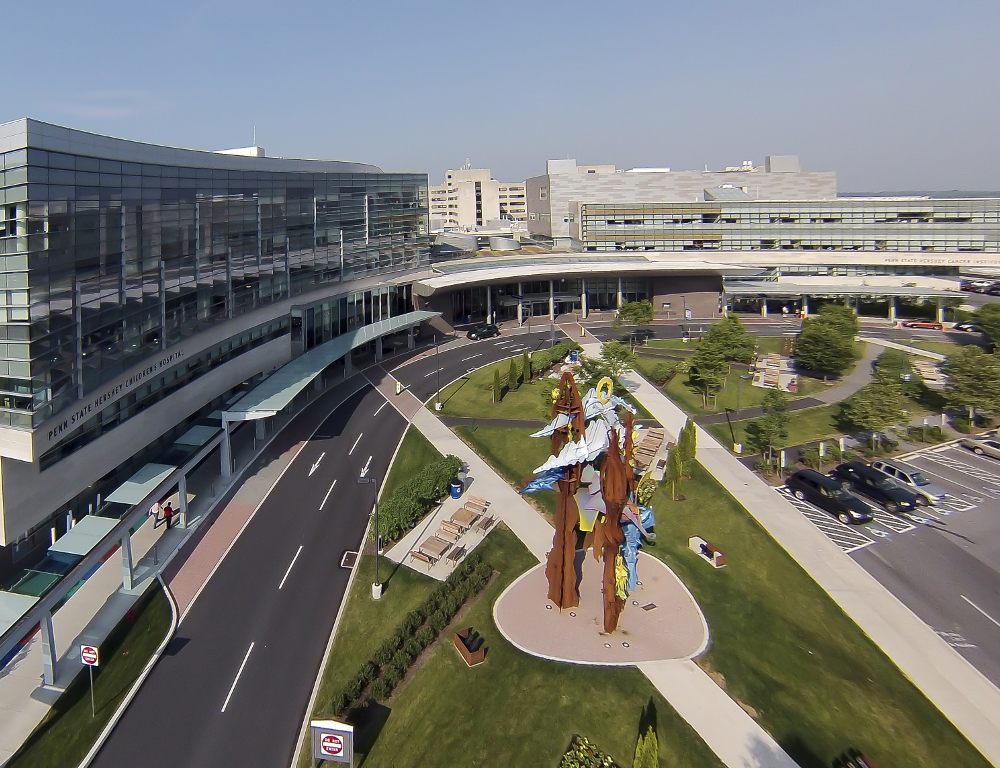Division of Plastic Surgery takes part in Ivy Society Annual Meeting

Members of Penn State Department of Surgery’s Division of Plastic Surgery took part in the Robert H. Ivy Society Annual Meeting held April 22, 2017, in Pittsburgh, PA.
Two residents won awards for their basic science presentations and described their experiences at the event.
By Ashley Leberfinger, MD (General Surgery PGY 2, Plastic Surgery Research Fellow; First Place, Basic Science)
The Robert H. Ivy Society (RHIS) Annual Meeting was held in Philadelphia, PA, April 22, 2017. I had the honor of presenting my research with Dr. Dino Ravnic in the Plastic Surgery Research Lab on Generation of Beta Cells from Human Adipose Derived Stem Cells. Adipose derived stem cells (ADSCs) offer the potential to develop into many different cell types and may offer the ability to generate replacement cells in vitro, including β-cells. We have consistently converted adipose derived stem cells into cells with a β-cell phenotype. Our differentiated β-cells secrete insulin in response to extracellular glucose. The ubiquity of adipose tissue allows for a reliable source of autologous mesenchymal stem cells which may hold promise in the cure of type 1 diabetes. I was honored to have my oral presentation awarded first place in the basic science category.
By Christine Jones, MD (PGY 6 Resident; Second Place, Basic Science)
I had the honor of presenting my abstract Acute Limb Shortening or Creation of an Intentional Deformity to Aid in Soft Tissue Closure for IIIB/IIIC Open Lower Extremity Fractures; this presentation earned a second-place award.
Our research retrospectively analyzed patients who underwent acute shortening or creation of an intentional deformity to simplify open fracture soft tissue defects when patients had failed free flaps or were not candidates for long microsurgical procedures. This technique allowed wounds to be closed primarily, skin grafted, or closed with local flaps, when they would otherwise require free tissue transfer. While additional patients’ reconstructions were simplified by the Ilizarov techniques, the focus of our project was four patients who needed free flaps but were unfit candidates. These patients would have otherwise faced amputation. None went on to amputation, and all were ambulatory at final follow-up. This technique can be used as a method of limb salvage and shows good skeletal, reconstructive, and functional outcomes.
Other students involved
Several other residents presented oral abstracts, including:
- Stacy Henderson, PGY-5: Use of Caprini Score as a Predictor of Free Flap Loss and Venous Congestion in Abdominally-Based Free Tissue Transfer for Breast Reconstruction
- Morgan Brgoch, PGY-4: Novel Application of Hand-Held Thermal Imaging for Free Flap Harvest and Monitoring
- Morgan Brgoch, PGY-4: Efficacy of Non-Opioid Adjunctive Analgesics and Post-Operative Opioid Consumption in Tissue Expander Breast Reconstruction
If you're having trouble accessing this content, or would like it in another format, please email Penn State Health Marketing & Communications.
